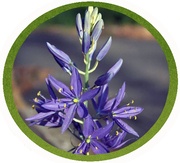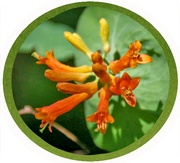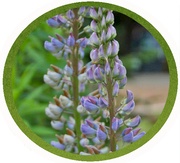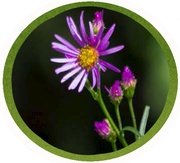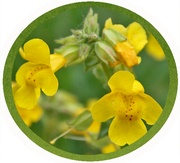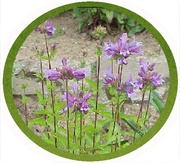Plants
From ferns to flowers, we know native plants. Native plants are a big part of native animal habitat, and we work constantly to keep Northwest Trek a haven for local flora. Take a Free-Roaming Area tour and gaze at our Douglas firs. Wander the trails to find wood sorrel or Pacific starflower.
GREAT CAMAS (Camassia leichtlinii)
This beautiful native plant has blue, purple or white petals. A perennial, it does well in sun and some shade. The Greater Camas flowers in mid to late spring, can grow around 48″ tall and is found on the west side of the Cascades in moist areas such as wetlands or meadows.
RED COLUMBINE (Aquilegia formosa)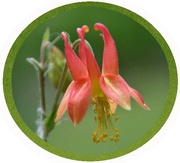
This native plant has bright red with yellow flowers. It is a perennial that grows in shaded and moist meadows and forests. The Red Columbine blooms throughout spring and summer and grows up to 48″ tall. When in bloom, it attracts butterflies and hummingbirds. The seeds are eaten by sparrows, juncos, and finches.
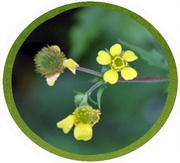
LARGE-LEAVED AVENS (Geum macrophyllum)
This native plant has yellow flowers. It is a perennial that grows in woods, meadows and moist areas. Large-Leaved Avens bloom throughout the spring and summer and can grow up to 3 feet tall.
 DOUGLAS IRIS (Iris douglasiana)
DOUGLAS IRIS (Iris douglasiana)
This purple-flowered perennial grows in grassy areas, in meadows, and on the coast. Douglas Iris blooms late spring and can grow up to 3 feet tall. It is not normally found more than 2 miles from the coast.
ORANGE HONEYSUCKLE (Lonicera ciliosa)
This native plant has orange, trumpet-shaped flowers. It is a woody vine that grows in forested areas. Orange Honeysuckle blooms in early summer and can grow up to 18 feet tall.
SCOULER’S CORYDALIS (Corydalis scouleri)
This native plant has pink, rose, or two-colored flowers. It is a perennial that grows by rivers and forested areas. Scouler’s Corydalis blooms late spring and can grow up to 50″ tall.
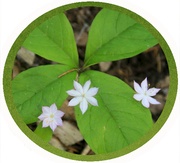
PACIFIC STARFLOWER (Trientalis latifolia)
This native plant has star-shaped white flowers. It is a perennial that grows in shady wooded areas. The Pacific Starflower blooms in early summer and can grow around 8″ tall.
LARGE-LEAVED LUPIN (Lupinus plyphyllus)
This large native plant has flowers shaped like a pea flower. Primary color is a bluish-purple, occasionally can be all white. The seeds are food for native birds and other small mammals. Silvery blue butterflies use the flowers. Can tolerate some partial shade if wet conditions can be avoided.
DOUGLAS ASTER (Aster subspicatus)
This perennial native wildflower has branched stems and purple star-like flower heads. Douglas Aster does well in full sun and moist conditions and attracts a variety of butterflies.
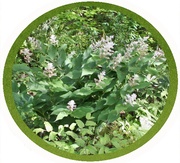
FALSE SOLOMON’S SEAL (Maianthemum racemosum)
This native plant has clusters of small white flowers. It grows in moist woods and flowers in mid spring. Its berries are green with brown mottling at first and turn bright red as they age.
COMMON MONKEY FLOWER (Mimulus guttatus)
This native plant has clusters of yellow flowers and oval leaves with pointed tips. It grows in wet environments throughout the Northwest and can grow up to 36″ tall. It flowers all summer long.
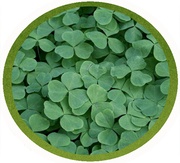
WOOD SORREL (Oxalis oregana)
This native plant has heart-shaped leaflets that are green on top and often maroon underneath. Its flowers are white or pink, with lance-shaped petals and pinkish-red veins. It is found in redwood or Douglas fir forests at low elevations and can grow up to 8″ tall.
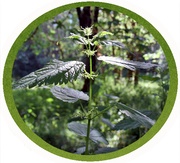
STINGING NETTLE (Urtica dioica)
This native perennial grows in moist deep soils in meadows, forests, and shrubby places. It has small greenish flowers and can grow up to 9 feet tall. Stinging Nettle can cause a painful rash if touched.
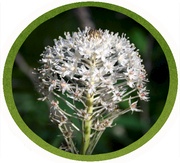
BEARGRASS (Xerophyllum tenax)
This native plant forms a tall evergreen grass-like clump of touch leaves topped by a large dense cluster of tiny, white fragrant flowers. Flowers irregularly every few years. Bears eat the fleshy leaf bases in springtime. Beargrass tolerates a wide-range of soils including clay, peaty and well-drained areas.
COAST PENSTEMON (Penstemon serrulatus)
This perennial native plant has large purple tubular flowers. It grows in moist meadows, along streams, and in rocky areas. It acts as a soil stabilizer and attracts wildlife like bumblebees, night-flying moths, and many types of butterflies.
Watch our horticulturalist Jake Pool make a sorbet from Douglas fir tips!
Foraging Resources:
‘Northwest Foraging: The Classic Guide to Edible Plants of the Pacific Northwest’ by Doug Benoliel
‘Edible Wild Plants: Wild Foods from Dirt to Plate’ by John Kallas
‘Mushrooms of the Pacific Northwest’ by Trudell and Ammirati
‘Nature’s Garden: A Guide to Identifying, Harvesting, and Preparing Edible Wild Plants’ by Samuel Thayer
Langdon Cook’s blog
Northern Bushcraft
PNW native plant guides:
‘Plants Of The Pacific Northwest Coast: Washington, Oregon, British Columbia & Alaska’ by Jim Pojar
‘Gardening with Native Plants of the Pacific Northwest’ by Arthur R. Kruckeberg
Washington Native Plant Society
